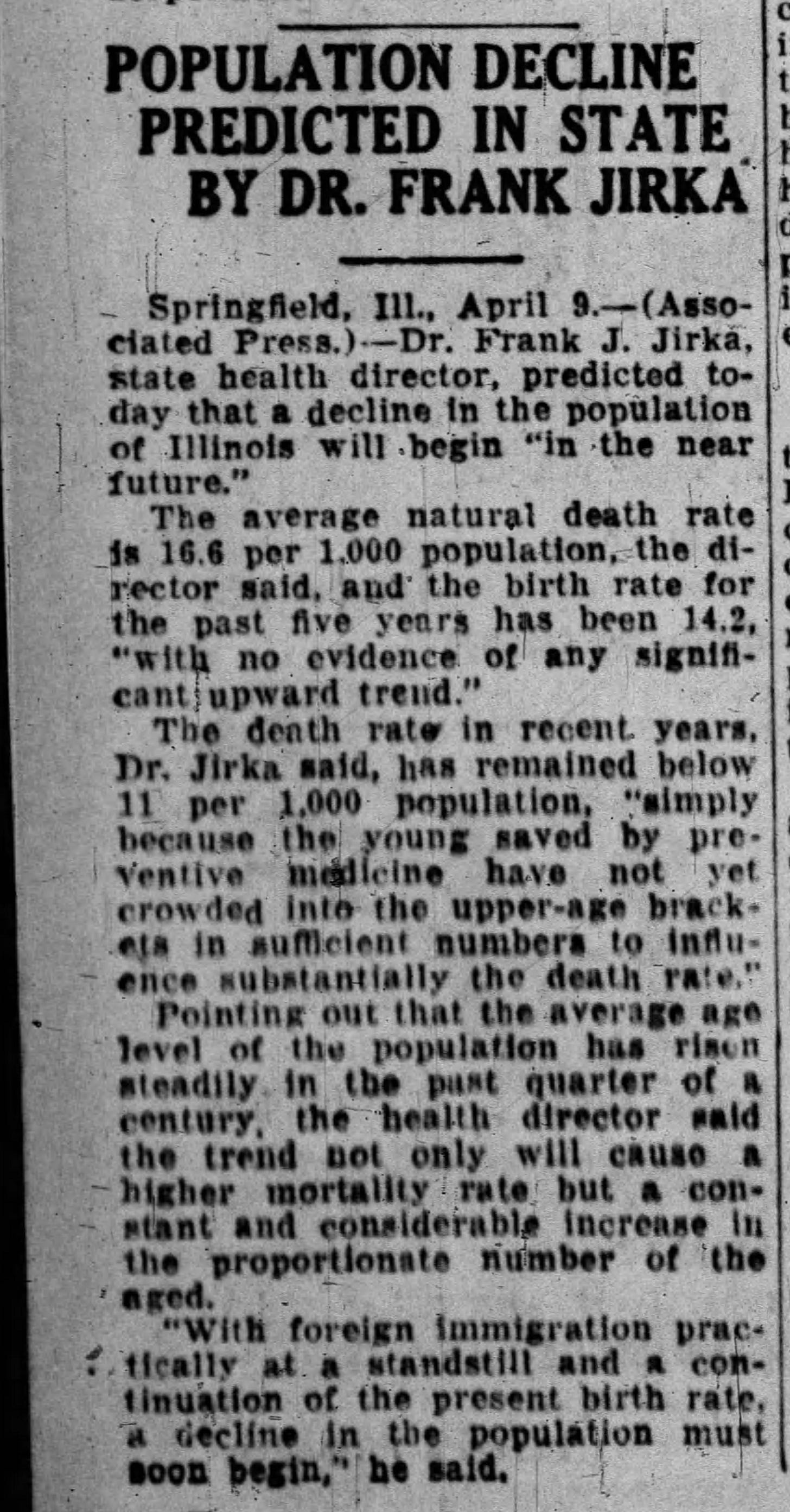Elon Musk has 133 million followers on Twitter and any news organization in the world will give him airtime to talk about pretty much whatever he wants. So when he becomes passionate about a subject, his views are guaranteed to be heard by much of the world’s population.
And population is something Musk is passionate about. “I can’t emphasize this enough, there are not enough people,” he told the audience at a Wall Street Journal event in 2021. Birth rates are sub-replacement. Population declines are coming. And the root causes, Musk told Tucker Carlson on Fox News this week, are the pill and abortion. (You can see the full video clip in this story.)
In the past we could rely upon simple limbic system rewards in order to procreate. But once you have birth control and abortions and whatnot, now you can still satisfy the limbic instinct but not procreate. We haven’t yet evolved to deal with that, cause this is all fairly recent, you know, the last fifty years or so for birth control. I’m sort of scared that if we don’t make enough people to at least sustain our numbers, perhaps increase a little bit, then civilization’s going to crumble.
I’ve been writing about demography for many years and I can tell you, based on reader feedback, that Musk’s views are widespread.
I can also tell you, based on a few simple facts, that they are wrong. (Not the worries about low fertility rates, please note. I share those concerns, to a degree — although I think “civilization’s going to crumble” is eye-rolling hyperbole.)
In this short article, I’ll show how we know they’re wrong. In doing so, I’ll also demonstrate the danger of what I call “temporal myopia” — that is, looking back only a short distance into history.
Let’s start by presenting Musk’s case with the strongest evidence I know of.
The US FDA approved “the pill” — oral contraception — in 1960. Abortion access was protected by the US Supreme Court’s Roe decision in 1973. And just look at that graph! The US fertility numbers fall off a cliff. From a robust 3.6 children per woman, the fertility rate falls well below two by the early 1970s. And remember, 2.1 is the magic number: That’s the “replacement rate” needed to merely maintain a population. Go below that and, all else equal, population decline over the long term will become inevitable.
Lots of people find this argument compelling. But there are two glaring problems.
The first is that the United States is only one country, and as Americans are fond of saying, it is exceptional. Let’s put some peers of the United States on this chart.
The trends look broadly similar, if we’re generous. But there are important deviations, most notably Sweden, which has had considerable ups and downs. And there are other wrinkles. The pill wasn’t available to single women in the UK until 1967. It wasn’t available at all in France until the same year. Yet both those countries experienced declining fertility prior to the pill. Hmmm…. Wet streets don’t cause rain. Is there something else going on here?
To answer that question, we have to address the huge problem with this graph, and Musk’s thinking: It’s shallow. Temporally shallow, that is.
What was happening with fertility rates before the introduction of the pill?
And when I say “before,” I mean “looking as far back as possible.” Because this is demography we’re talking about and demographic trends can go on for generations.
I chose the four countries on the graph because they have some of the oldest statistics anywhere in the world, so we can look way, way back.
And when we do, we see this:
In France, the fertility rate started falling in the late-18th century. In the United States, it started felling in the early 19th century. In the others, it started falling later in the 19th century. But in every case, fertility rates had fallen substantially for decades, at a minimum, before the 20th century even began. (France’s head-start helps explain its fading geopolitical power over the course of the 19th and 20th centuries. The soaring US population explosion of the 19th century was the product of both the declining-but-still-high fertility rate and enormous levels of immigration.)
In fact, what leaps out in this perspective is that there is a remarkably smooth downward trend line from the 19th century to today.
With one exception: the two-decade-long baby boom after 1945.
Elon Musk and so many others treat high post-war fertility rates as the norm and the fall of those rates as the aberration — an aberration that must be explained by the introduction of the pill and abortion. They’re wrong.
The baby boom was the aberration. The fall in fertility rates when the baby boom ended was merely the resumption of a very old trend.
People had sex before the 1960s, and they quite enjoyed it. Really. I know that’s a bold claim. But if you are unconvinced, I suggest having a read of Only Yesterday, a history of the 1920s published in 1931. A central theme of Frederick Lewis, the author, is that people wouldn’t shut up about sex in that liberated decade. Popular culture was saturated with it. Only Yesterday was a huge bestseller among people who had just finished living through the 1920s, so it seems Lewis was onto something.
And yet, despite all this sex-having, fertility rates continuously fell from the 19th-century on. That is a pretty strong hint that in addition to sex, there was birth control before the 1960s. Really. There were quite a few methods and technologies, in fact. Social conservatives fought to suppress them but they mostly failed. Because lots of people wanted them, and where is demand, there is supply. (For a fun history of American birth control back to the late 19th century, see Devices and Desires by Andrea Tone.)
More evidence of just how wrong Musk and others are can be found in newspaper archives.
In the 1930s, demographers looked at the long-standing trend line in fertility rates, extended that line smoothly forward, and declared that Western countries would soon experience population decline. Many raised the alarm.
Here are a few stories I plucked out of American newspapers in 1937. There are countless others like them, at the local, state, national, and international levels.
.
In the United Kingdom, a bill was introduced to gather more data on what demographers insisted was a pressing problem that would drastically reduce the British population if trends continued. Opponents thought the bill intruded on privacy. They mocked it in classic British style:
The population decline demographers feared didn’t happen in the US and the UK for two reasons. First, in the post-war era, high levels of immigration were resumed (in the US) or instituted for the first time (in the UK). In the nativist 1930s, when economies were mired in the Great Depression, such policies were unimaginable.
Second, of course, the baby boom exploded after 1945. It was a total surprise to demographers and politicians alike, and for good reason. Most economists believed the end of the Second World War would be followed by a resumption of the economic slump that had gripped the world for the previous 15 years. Few even dared dream of the long post-war economic boom that followed instead. But even more importantly, the demographers knew that the fertility rate decline was almost a century old and they saw no reason why it would not continue. A sudden, sharp reversal lasting for two decades was the stuff of fantasy.
But economies did boom and birth rates did soar. For a while. But now we’re back where we were in the 1930s, facing the slow-moving, long-term demographic crisis that the baby boom delayed but did not erase.
Few people are familiar with this history. For that we can thank the dominance of the post-war golden era in our thinking.
The long booms — economic and baby — were of such foundational significance to everything that followed that they utterly dominated popular perceptions. Among baby boomers. Among gen x-ers. Even among millennials. To this day, an awful lot of us continue to make the mistake of thinking that era was normal. And we continue to treat the 1950s as a baseline — the decade that is the very definition of “normal.”
That belief is as wrong as it is common. What sustains it is the failure to look further back in history.
This is why I say Elon Musk’s silly statement is a marvellous illustration of the danger of temporal myopia.
If you look back to the introduction of the pill, and you look at fertility rates, it is very easy to construct a highly plausible explanation for what you are seeing: The pill gave women the power to control pregnancy for the first time, they exercised it, and high fertility rates plunged to below replacement levels. Now, if you happen to harbour a certain hostility toward feminists, this explanation is all the more appealing. After all, the 1960s and 1970s were the high-water of the “women’s lib” movement. Clearly, if we’re facing a demographic crisis, feminists are to blame. And there’s an obvious solution which is appealing to those of a reactionary bent: a return to 1950s social attitudes, with father at work and mother at home tending to 3.6 children.
But look back further and that story falls to bits.
This is summed up perfectly in the two charts I presented above.
First chart: Wow! Look at what the pill did to the fertility rate!
Second chart: Hang on! What happens if we look back further?
The analysis is transformed.
Quick and glib explanations are out. As are quick and glib solutions.
Conclusion?
Whenever possible, look back further.
PS: Some readers had questions about the current data, along with questions about fertility rates elsewhere in the world.
Very simply: All the developed countries are below the replacement rate needed to merely maintain population (2.1) but there is considerable variation among them. Until recently, the US had one of the higher rates, thanks somewhat to higher rates of teen pregnancy, but teen pregnancy rates fell, and the overall fertility rate with it. Today, Sweden and France — which both heavily support working mothers — have among the higher rates. At the bottom are East Asian countries, notably Japan, South Korea, and China. In those countries, rates are approaching one child per woman, or dipped even lower. (For many decades, most demographers believed fertility rates could never fall so low because they will produce extreme population decline, and demographers assumed there was some sort of biological imperative hardwired into us that would prevent this. Turns out, there isn’t.)
Thanks to the wonderful Our World in Data, you can explore the numbers for yourself by going here and adding or subtracting countries as you like.
Following are two charts that clarify some of the points raised by readers.

















You know you will never get to 133 million followers with this same and informed content. But thanks so much.
I appreciate the historical perspective that this post offers, but I which it offered some other possibilities for what has been driving the falling birth rate. I’m no expert, but some factors I’ve heard cited include: increasing education among women, shifts in employment among women and men, and falling fertility in men (which may be the real ticking time bomb here). Most likely, availability of birth control is a contributing factor along with all of these and more.
A poster above seems to want to see feminists undermined. But if rising education and employment among women leads to falling birth rates, the feminists he wants to undermine are not those of the present, but those of 75 or more years ago. Does anyone really want to go back to a society that so completely oppresses women?